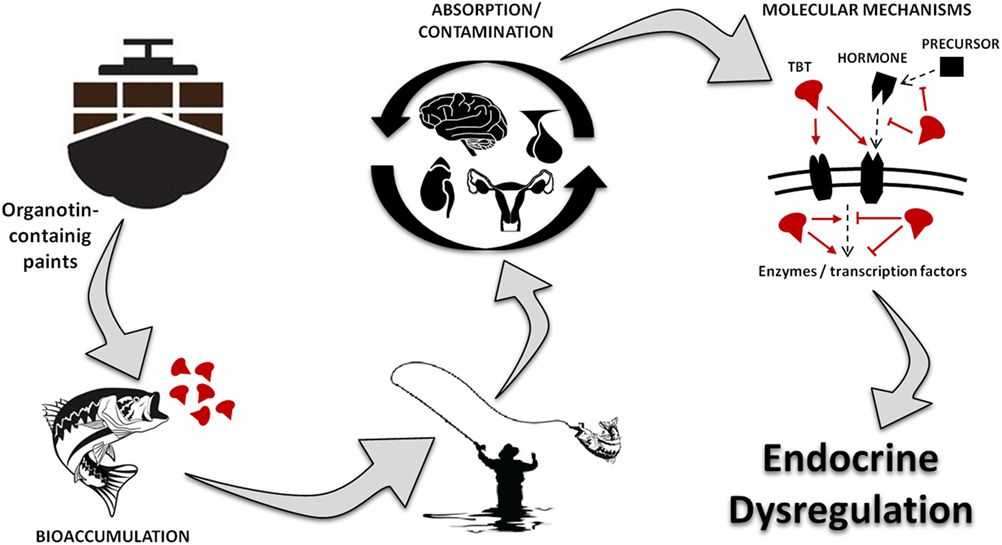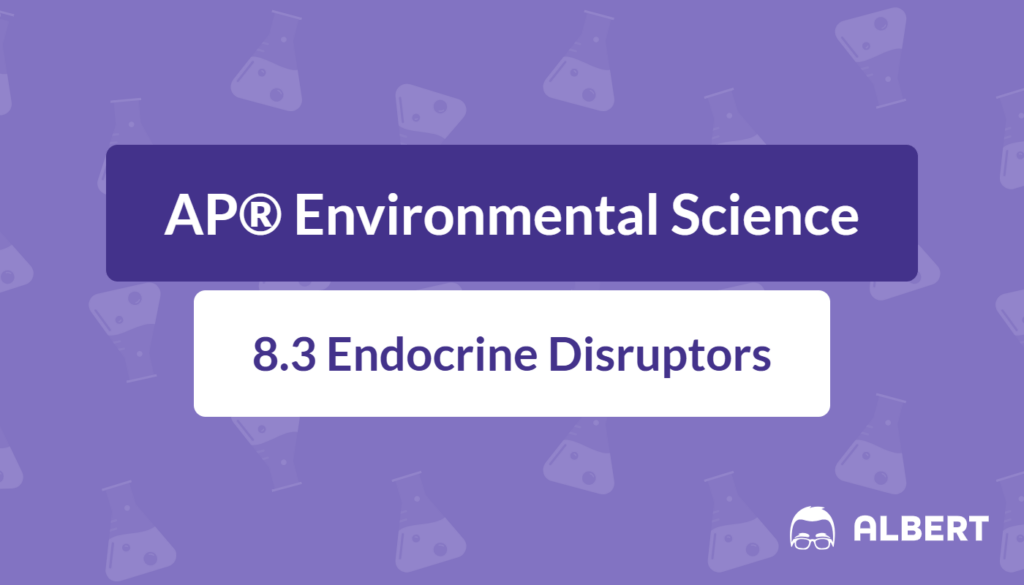What We Review
Introduction
Endocrine disruptors have become a key focus, especially when considering population dynamics and ecosystem health. These chemicals, found in everyday products and industrial releases, can affect living organisms in subtle yet serious ways. Understanding how they work, what is a endocrine disruptor, what their impacts are, and how to mitigate them is essential for evaluating human health risks and preserving balanced ecosystems. This article explores the crucial role endocrine disruptors play in the environment and explains why students should pay close attention to this topic.
Contaminants of this type are now found worldwide. Consequently, environmental scientists focus heavily on how these chemicals affect everything from fish populations to human health. Endocrine disruptors illustrate the link between chemistry, biology, and environmental policy, which highlights why they are vital to study. Additionally, they provide a window into how small shifts in hormone function can have large-scale repercussions on population growth models and ecosystem stability.
What Is an Endocrine Disruptor?
An endocrine disruptor is any chemical that interferes with the endocrine system, which regulates hormones in the body. Hormones act as chemical messengers, traveling through the bloodstream to coordinate functions like growth, metabolism, and reproduction. Generally, they operate at very low concentrations, so even tiny amounts of an endocrine disruptor can create significant effects.
The Endocrine System Explained
The endocrine system includes glands such as the thyroid, adrenal, and pituitary glands. Each produces hormones that control different bodily functions. For instance, insulin from the pancreas helps regulate blood sugar, while estrogen and testosterone influence reproductive systems. If a chemical mimics or blocks these natural hormones, it disrupts the underlying processes. Consequently, animals (including humans) may experience abnormal development, metabolic changes, or reproductive challenges.
Common Endocrine Disruptors
Several chemicals qualify as endocrine disruptors. For example, Bisphenol A (BPA) in some plastics resembles estrogen. Certain pesticides, like DDT, impair reproductive hormones in birds and fish. Heavy metals, such as lead and mercury, can also hinder hormone-based signals. Furthermore, some cosmetic products contain parabens, which have been investigated for their potential influence on the endocrine system. Although there are many different endocrine disruptors, they often share the ability to bind to hormone receptors or alter hormone production, resulting in adverse effects.
How Do Endocrine Disruptors Work?
Endocrine disruptors can interfere with hormone signaling at several points in the body. Primarily, they can:
- Increase or decrease hormone production.
- Mimic hormones, causing the body to respond as if a real hormone were present.
- Block hormone receptors, preventing the actual hormone from binding.
- Alter how hormones are transported or broken down within the body.
Because the endocrine system relies on precise signals, any external substance that hijacks these pathways can trigger widespread effects. However, the magnitude of those impacts depends on the concentration of the disruptor, the duration of exposure, and the organism’s stage of development. Therefore, younger or developing organisms can be more vulnerable.
Types of Chemical Exposures
Endocrine disruptors are encountered in different contexts:
- Pesticides: Used to protect crops, but residues can run off into waterways.
- Plastics: Products containing BPA or phthalates sometimes leach chemicals into food or water.
- Heavy Metals: Mining and industrial activities release lead, mercury, and other metals, which can interfere with hormones.
Next, these contaminants may accumulate in soils, water bodies, and living tissues. Consequently, wildlife at higher trophic levels often experience bioaccumulation and biomagnification, leading to stronger disruptive effects.
Effects of Endocrine Disruptors on Animals
Animals in affected habitats frequently exhibit changes in growth, behavior, or reproduction. For instance, some pesticides have been shown to cause birth defects in wildlife. Additionally, exposure to disruptors can lead to developmental disorders that impair normal growth or neurological function, and gender imbalances sometimes appear in fish populations where chemicals mimic estrogen.
Specific Examples of Impact
- Birth Defects: Offspring of exposed organisms may hatch or be born with malformed organs or physical structures.
- Developmental Disorders: Young organisms can suffer from delayed growth or impaired cognitive abilities due to hormonal imbalances.
- Gender Imbalances: Fish exposed to endocrine disruptors sometimes develop more female traits, altering population ratios.
These disruptions are alarming because they cascade through the food web. Therefore, ecologists study how various contaminants affect predator-prey relationships, population growth rates, and overall ecosystem stability.
Step-by-Step Example: Effect on a Fish Population
Consider a fish population that follows the exponential growth equation under normal conditions:
N(t) = N_0 e^{rt}- N(t) represents the fish population at time t.
- N_0 is the initial population size.
- r is the intrinsic growth rate.
- e is the base of the natural logarithm.
- Without endocrine disruptors, biologists might observe steady population growth following N(t).
- If an endocrine disruptor causes increased mortality or reduces fertility, the effective growth rate r decreases.
- When r becomes negative, the population experiences a decline, which illustrates how disruptions in hormonal function can undermine even healthy populations.
- Over time, birth defects and gender imbalances further reduce reproductive success, compounding the negative trend in N(t).
As a result, this altered population growth model can influence the overall health of the aquatic ecosystem, affecting predator-prey interactions and the balance of species.
Effects on Ecosystems and Human Health
Endocrine disruptors do not operate in a vacuum. Rather, they spread through water currents, soil particles, and food chains. Once they reach critical concentrations, these chemicals can upset entire ecosystems. For example, if fish populations decline, predators such as birds and larger aquatic animals suffer from food shortages. Consequently, the ecosystem may lose biodiversity, and the natural balance shifts.
Potential Consequences for Human Health
Human exposure to endocrine disruptors can occur through contaminated water, food, or direct contact with products. In children, they may contribute to developmental disorders affecting growth and cognitive functions. Additionally, endocrine disruptors have been studied for possible links to hormonal cancers, metabolic changes, and immune system dysfunction. Although more research is needed for definitive conclusions, organizations such as the World Health Organization emphasize reducing unnecessary exposures. Therefore, understanding the sources of endocrine disruptors is critical for public health strategies.

Strategies for Mitigation
Addressing endocrine disruptors involves a collective effort. Governments establish regulations to reduce harmful chemical use after toxicological studies confirm risks. However, individuals and communities can also take part by making informed choices and pressing for safer alternatives.
- Opt for BPA-free products: Look for labels indicating BPA-free plastics or switch to glass or stainless steel containers.
- Reduce pesticide exposure: Choose organically grown produce or thoroughly wash fruits and vegetables.
- Support environmental policies: Campaigns that restrict the use of certain chemicals can push industry toward safer practices.
- Increase awareness: Educational programs help consumers understand the necessity of responsible product use and disposal.
These strategies aim to limit environmental contamination and shield sensitive populations, such as pregnant women and children. Furthermore, policies that protect water quality and wildlife habitats help preserve ecosystems from chemical disruptions.
Conclusion
Endocrine disruptors illustrate how seemingly small chemical disturbances can produce large-scale environmental consequences. They interfere with the endocrine system, cause developmental issues, and destabilize population growth models that are otherwise predictable. Monitoring and regulating these chemicals, while encouraging personal action, strengthens efforts to preserve biodiversity and human health. Moreover, comprehension of endocrine disruptors serves as a reminder that human activities—however minor they appear—can ripple through ecosystems in profound ways.
Staying informed empowers communities and shapes future environmental policies. Consequently, students are encouraged to track emerging research on endocrine disruptors, recognize their potential threats, and explore solutions that promote both ecological balance and public well-being.
Important Vocabulary
- Endocrine System: A group of glands that produce hormones to regulate growth, metabolism, and reproduction.
- Endocrine Disruptor: Any chemical that disturbs normal hormone function by mimicking or blocking hormone signals.
- Birth Defects: Physical or functional abnormalities present in organisms at or before birth.
- Developmental Disorders: Delays or impairments in physical, learning, or behavioral development.
- Gender Imbalances: Disproportionate ratios of males to females in a population, often caused by hormonal interference.
Sharpen Your Skills for AP® Environmental Science
Are you preparing for the AP® Environmental Science test? We’ve got you covered! Try our review articles designed to help you confidently tackle real-world AP® Environmental Science problems. You’ll find everything you need to succeed, from quick tips to detailed strategies. Start exploring now!
- AP® Environmental Science: 7.8 Review
- AP® Environmental Science: 8.1 Review
- AP® Environmental Science: 8.2 Review
Need help preparing for your AP® Environmental Science exam?
Albert has hundreds of AP® Environmental Science practice questions, free response, and full-length practice tests to try out.








